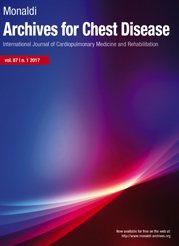Respiratory and functional outcomes among severe COVID-19 infection survivors: a prospective observational study
All claims expressed in this article are solely those of the authors and do not necessarily represent those of their affiliated organizations, or those of the publisher, the editors and the reviewers. Any product that may be evaluated in this article or claim that may be made by its manufacturer is not guaranteed or endorsed by the publisher.
Authors
Patients who have severe to critical COVID-19 infection may experience persistent or new symptoms after discharge. Our objective is to determine the first-year post-discharge respiratory and functional outcomes in patients who survived COVID-19 infection. In this prospective and observational study, we recruited Malaysians above 18 years old who survived severe or critical COVID-19 and followed them up for 1 year. Patients completed the post-COVID-19 Functional Status (PCFS) scale, performed the 6-minute walk test, and a standard spirometry. In the final analysis, 94 patients were included. Median age was 57 years (24,86); 55 (57.3%) were men, and 20 (20.8%) required invasive ventilation. Overall, 45 (46.9%) had underlying hypertension, 33 (34.4%) had diabetes mellitus, 43 (44.8%) had hospital-acquired infection, 19 (19.8%) had raised liver enzymes, and 17 (17.7%) suffered pulmonary embolism. From discharge to 1 year following discharge, the percentage of patients with dyspnea reduced from 51.4% to 25.0%, while patients with cough reduced from 16.2% to none, and fatigue from 20.0% to 12.5%. The percentage of patients with PCFS of 0 increased from 48.0 to 62.5%, while no more patients reported PCFS scales of 3 or 4 after 24 weeks. The median 6-minute walk distance within 1 to 8 weeks was 375.0 m (108.0, 540.0). This increased to 500.0 m (330.0, 680.0) at 41 to 48 weeks. Throughout the follow-up, the percentage of patients with normal spirometry findings increased from none at 1 to 8 weeks to 43.8% at 41 to 48 weeks. In conclusion, patients gradually regained their functional status. Follow-up for patients with persistent symptoms and abnormal spirometry is necessary to determine their long-term outcome.
Ethics approval
The study was performed in accordance with the Declaration of Helsinki. The Medical Research and Ethics Committee (MREC), Ministry of Health Malaysia, approved the study protocol, with reference number 21-02115 BDZ (1).How to Cite

This work is licensed under a Creative Commons Attribution-NonCommercial 4.0 International License.






